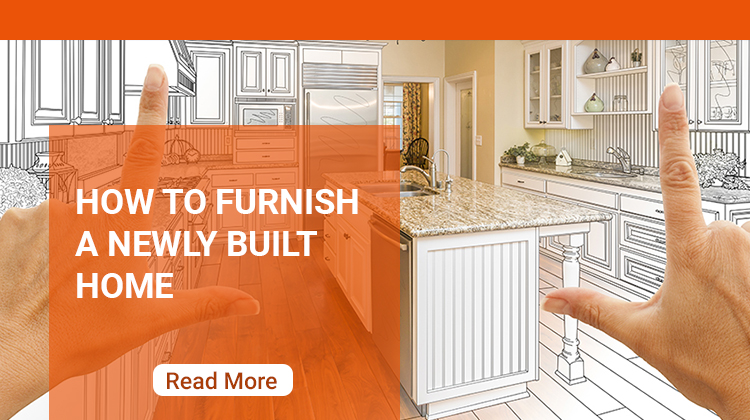The new construction provides the perfect blank canvas to create a home that truly reflects your identity, personality, and lifestyle. After all, you’re not inheriting someone else’s tastes and won’t have to go through stressful structural work you just need to know now how to furnish a newly built home. Since you have built your own house after buying a plot now furnishing it is another critical decision you have to make and deciding from where to start can be overwhelming when faced with plain walls and empty spaces.
Here are some of the tips given for you on how to furnish a newly built home :
Find your style
Before you begin, think carefully about what you want your home to look like. What atmosphere do you want to create? Which decorating style will make you feel happiest and most comfortable? Collect images, textures, and materials that appeal to you and create a mood board that you can refer to as the project progresses. Pinterest, Instagram, and magazines are great sources of inspiration for this, but be realistic about what will work for you, and remember that pieces photographed for editorial purposes often don’t reflect everyday life. You might like the idea of a bohemian, vintage-inspired look, but it won’t work if, deep down, you know you can’t stand the clutter.
This allows you to customize fixtures, fittings and finishes according to your needs. This greatly simplifies the design process but be sure to think beyond fleeting trends and choose things that will stand the test of time.
Take your time with color
Once you have decided on a style, it may be tempting to rush to paint or wallpaper, but it is not recommended for the first 12 months while your home will still be settling, and dry due to the construction process. So, use this period to get a feel for the light and how it changes throughout the day and think about what colors might work and where. When it comes time to pick up a brush, be sure to apply a test patch first, as the same shade can look very different depending on which direction a piece is facing. North-facing spaces tend to have a bluish light, for example, while south-facing rooms receive a warmer, more golden light.
Play with furniture and layout
Designing a new build means you have the flexibility to create a layout that works perfectly for your needs. Start by identifying what activities take place in your home and how you want to use each room. Would you like a space for family dinners or lunches? Or an intimate corner to curl up with a book? Large, open spaces can seem particularly intimidating, so think about how you could “zone” them to create defined zones for different things.
Once done, you can start creating a floor plan for each room (with pen and paper or with a dedicated app). It helps to start with the largest and most essential item: the bed, the dining table, the sofa, etc. It is normally the largest investment and often the focal point of the entire space, so do it right and then place the smaller pieces around it. But avoid the temptation to overcrowd your home – you’ll want to leave enough space for people to move around freely.
Get the right lighting
Lighting has a huge impact on the look of a space and can make or break an interior design scheme. Lighting generally falls into three categories: ambient lighting, which mimics daylight and illuminates the space as a whole; targeted activity lighting to aid in certain activities; and accent lighting, which can be used to create pools of light or to highlight specific features. The advantage of the new construction is that you can choose whether you want pendant or ceiling lamps, so think carefully about how you will use each space. Once you’ve moved in, you can add floor and table lamps to complement the built-in lighting and create a warm, relaxed atmosphere. In particular, the living and dining areas often benefit from softer light sources that can be used in addition to or instead of the main ceiling light to adjust the environment.
Add color and texture with accessories
Finally, don’t underestimate the power of small details such as upholstery, artwork, plants, window treatments, and vases. They help set the mood of the room and are a great way to instantly add color and texture to your home. Just keep in mind the final look of what you have been visualizing long before you start painting, it feels the same as you wanted to achieve (a mood board is very helpful here) so you don’t waste money on something that won’t work later.
Any decorating project, big or small, can seem overwhelming. How do you know where to start? How do you know you’ll like the results? How can you make sure you don’t make costly mistakes that cost time and money to correct? And social media, which inspires our homes, often confuses us.
It can be surprisingly difficult to get rid of all the noise – the trends, the opinions, the multitude of so-called “design rules” – and figure out what resonates with you. The most important is home is what fits your needs and conveniences and helps the family to feel the warmth and connection.

